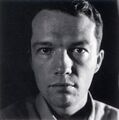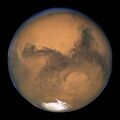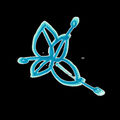Template:Selected anniversaries/August 27: Difference between revisions
No edit summary |
No edit summary |
||
| Line 6: | Line 6: | ||
||1784: James Tytler made the first balloon ascent in Britain in a hot-air balloon at Ediburgh, Scotland. He exhibited his "Grand Edinburgh Fire Balloon" in the uncompleted dome of Robert Adam's Register House. It was barrel-shaped, 40-ft tall, 30-ft diameter, with hot air produced by a stove. He wore a cork jacket for protection, and sat a small wicker packing case below the balloon. Before a small number of onlookers, the balloon rose to 350 feet in the air, travelled half a mile, and landed in Restalrig village. Tytler reported that the flight was "most agreeable with no giddiness" and that he "amused himself by looking at the spectators below." Four days later, a large paying audience saw it, but that flight was much less successful. | ||1784: James Tytler made the first balloon ascent in Britain in a hot-air balloon at Ediburgh, Scotland. He exhibited his "Grand Edinburgh Fire Balloon" in the uncompleted dome of Robert Adam's Register House. It was barrel-shaped, 40-ft tall, 30-ft diameter, with hot air produced by a stove. He wore a cork jacket for protection, and sat a small wicker packing case below the balloon. Before a small number of onlookers, the balloon rose to 350 feet in the air, travelled half a mile, and landed in Restalrig village. Tytler reported that the flight was "most agreeable with no giddiness" and that he "amused himself by looking at the spectators below." Four days later, a large paying audience saw it, but that flight was much less successful. | ||
||1850: Augusto Righi born ... physicist and a pioneer in the study of electromagnetism. Pic. | ||1850: Augusto Righi born ... physicist and a pioneer in the study of electromagnetism. Pic. | ||
| Line 17: | Line 15: | ||
||1859: Petroleum is discovered in Titusville, Pennsylvania leading to the world's first commercially successful oil well. “Colonel” Edwin L. Drake drilled the first successful oil well in the United States, near Titusville, Pennsylvania. The drilling had reached 69 feet 6 inches, when a dark film floating on the water below the derrick floor was noticed. | ||1859: Petroleum is discovered in Titusville, Pennsylvania leading to the world's first commercially successful oil well. “Colonel” Edwin L. Drake drilled the first successful oil well in the United States, near Titusville, Pennsylvania. The drilling had reached 69 feet 6 inches, when a dark film floating on the water below the derrick floor was noticed. | ||
||1874: Carl Bosch born ... chemist and engineer, Nobel Prize laureate. Pic. | |||
||1874: Carl Bosch born ... chemist and engineer, Nobel Prize laureate. | |||
||1875: The element gallium was discovered by P.E. Lecoq de Boisbaudran. In an article in the Annales de Chimie in 1877, he said his search started 15 years earlier, but with inadequate resources. Even with a new laboratory (1863) he had no success until he realized he was using too little material, and in Feb 1874 started with 52 kg of a mineral from Pierrefitte mine. He finally isolated a tiny sample: “On August 27, 1875, between three and four at night, I perceived the first indications of the existence of a new element that I named gallium in honor of France (Gallia).” His first spectroscopic analysis of the tiny amount (he estimated 1/100 mg) of the prepared sample showed a previously unknown violet line at 417.0 indicating a new element. | ||1875: The element gallium was discovered by P.E. Lecoq de Boisbaudran. In an article in the Annales de Chimie in 1877, he said his search started 15 years earlier, but with inadequate resources. Even with a new laboratory (1863) he had no success until he realized he was using too little material, and in Feb 1874 started with 52 kg of a mineral from Pierrefitte mine. He finally isolated a tiny sample: “On August 27, 1875, between three and four at night, I perceived the first indications of the existence of a new element that I named gallium in honor of France (Gallia).” His first spectroscopic analysis of the tiny amount (he estimated 1/100 mg) of the prepared sample showed a previously unknown violet line at 417.0 indicating a new element. | ||
| Line 25: | Line 21: | ||
||1876: Harry Egerton Wimperis born ... British aeronautical engineer who acted as the Director of Scientific Research at the UK's Air Ministry prior to World War II. He is best known for his role in setting up the Committee for the Scientific Survey of Air Defence under Henry Tizard, which led directly to the development and introduction of radar in the UK. He is also known for the development of the Drift Sight and Course Setting Bomb Sight during World War I, devices that revolutionised the art of bombing. Pic: https://www.npg.org.uk/collections/search/portrait/mw52864/Harry-Egerton-Wimperis | ||1876: Harry Egerton Wimperis born ... British aeronautical engineer who acted as the Director of Scientific Research at the UK's Air Ministry prior to World War II. He is best known for his role in setting up the Committee for the Scientific Survey of Air Defence under Henry Tizard, which led directly to the development and introduction of radar in the UK. He is also known for the development of the Drift Sight and Course Setting Bomb Sight during World War I, devices that revolutionised the art of bombing. Pic: https://www.npg.org.uk/collections/search/portrait/mw52864/Harry-Egerton-Wimperis | ||
||1883: Rube Goldberg born ... sculptor, cartoonist, and engineer. | ||1883: Rube Goldberg born ... sculptor, cartoonist, and engineer. Pic. | ||
||1883: Eruption of Krakatoa: Four enormous explosions destroy the island of Krakatoa and cause years of climate change. | ||1883: Eruption of Krakatoa: Four enormous explosions destroy the island of Krakatoa and cause years of climate change. | ||
||1896: Léon Theremin born ... physicist and engineer, invented the Theremin. | ||1896: Léon Theremin born ... physicist and engineer, invented the Theremin. Pic. | ||
||1898: John Hopkinson dies ... physicist and electrical engineer who worked on the application of electricity and magnetism in devices like the dynamo and electromagnets. Hopkinson's law (the magnetic equivalent of Ohm's law) bears his name. In 1882, he patented his invention of the three-wire system (three phase) for electricity generation and distribution. He presented the principle the synchronous motors (1883), and designed electric generators with better efficiency. He also studied condensers and the phenomena of residual load. In his earlier career, he became (1872) engineering manager of Chance Brothers and Co., a glass manufacturer in Birmingham, where he studied lighthouse illumination, improving efficiency with flashing groups of lights. Pic: https://es.wikipedia.org/wiki/John_Hopkinson | ||1898: John Hopkinson dies ... physicist and electrical engineer who worked on the application of electricity and magnetism in devices like the dynamo and electromagnets. Hopkinson's law (the magnetic equivalent of Ohm's law) bears his name. In 1882, he patented his invention of the three-wire system (three phase) for electricity generation and distribution. He presented the principle the synchronous motors (1883), and designed electric generators with better efficiency. He also studied condensers and the phenomena of residual load. In his earlier career, he became (1872) engineering manager of Chance Brothers and Co., a glass manufacturer in Birmingham, where he studied lighthouse illumination, improving efficiency with flashing groups of lights. Pic: https://es.wikipedia.org/wiki/John_Hopkinson | ||
| Line 35: | Line 31: | ||
||1902: Meyer Lansky born ... American gangster. | ||1902: Meyer Lansky born ... American gangster. | ||
||1903: Miron Nicolescu born mathematician. | ||1903: Miron Nicolescu born mathematician. Pic. | ||
||1903: Physicist Rudolf Kühnhold born. He will research both sonar and radar, often given credit for initiating research that led to the ''Funkmessgerät'' in Germany. No death date. Deutch Wiki: https://de.wikipedia.org/wiki/Rudolf_K%C3%BChnhold Pic: https://forum.axishistory.com/viewtopic.php?t=172747&start=255 | ||1903: Physicist Rudolf Kühnhold born. He will research both sonar and radar, often given credit for initiating research that led to the ''Funkmessgerät'' in Germany. No death date. Deutch Wiki: https://de.wikipedia.org/wiki/Rudolf_K%C3%BChnhold Pic: https://forum.axishistory.com/viewtopic.php?t=172747&start=255 | ||
Revision as of 08:22, 26 October 2019
1858: Mathematician Giuseppe Peano born. He will do pioneering work in mathematical logic and set theory.
1915: Physicist Norman Foster Ramsey Jr. born. He will be awarded the 1989 Nobel Prize in Physics for the invention of the separated oscillatory field method, which will have important applications in the construction of atomic clocks.
1926: Chemist and composer George Brecht born. He will be a conceptual artist and avant-garde composer, as well as a professional chemist who will work as a consultant for companies including Pfizer, Johnson & Johnson, and Mobil Oil.
1934: Marie Curie, French-Polish physicist and chemist dies. She conducted pioneering research on radioactivity, discovering the elements polonium and radium.
1938: Mathematician and philosopher Edmund Husserl publishes new class of Gnomon algorithm functions based on transcendental consciousness as the limit of all possible knowledge.
2003: Mars makes its closest approach to Earth in nearly 60,000 years, passing 34,646,418 miles (55,758,005 km) distant.
2017: Dennis Paulson of Mars wins Pulitzer Prize for Best Reality Television Show.
2019: Chromatographic analysis of Blue Foliage "at least five new shades, possibly six" of the color blue.







